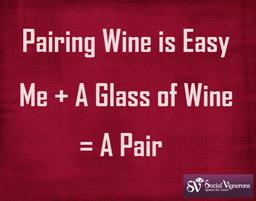 Sixteen years ago some friends of mine had a dream. They were all professionals, but they were also amateur foodies who, along with another friend of ours, had formed a competition barbecue cook team called the BBQ Boys.
Sixteen years ago some friends of mine had a dream. They were all professionals, but they were also amateur foodies who, along with another friend of ours, had formed a competition barbecue cook team called the BBQ Boys.
In 1998, the BBQ Boys shocked the barbecue world by winning the brisket competition at the American Royal barbecue competition in Kansas City. “Shocked” is a fair assessment. The BBQ Boys had not been doing barbecue competitions for very long, and they were cooking on a giant Weber kettle, not on some massive, towed, industrial smoker like most of their competition. Yet in 1998 they beat out over 450 competitors in one of the most prestigious barbecue competitions in the country, known by many as “the World Series of Barbecue.”
In 1999, John Kean (a doctor), Mike Taylor (a lawyer) and Jim Budros (a financial planner) partnered with Rick Malir, an executive from John Deere, and Frank Pizzo who had experience franchising and operating fast food restaurants, to open the first City Barbeque restaurant in a Columbus Ohio suburb.
With the BBQ Boys’ expertise in ‘Cue, and the business and restaurant acumen of Malir and Pizzo, City Barbeque cracked the code on preparing and serving slow-cooked, smoked meats quickly and deliciously. This is not a restaurant review blog, but if City Barbeque is not the best barbecue I have ever had, it is right at the top. With a total of 23 restaurants in four states, City Barbecue has become a smashing success.
Rick Malir was the inspiration for this article, having recently asked if I had a list of wines to drink with their barbecue. I absolutely do – but let me start by explaining what I think about when pairing food and wine.
The Science of Taste and Smell
Food and wine pairings are about tastes and not flavors. Although some writers use those terms interchangeably, it simplifies pairing to distinguish between them.
Most people, at least those who are not food or beverage professionals, tend to think of flavors as those things that they taste. Flavors are things like banana (in deference to the Minion-mania that has gripped my house) or bacon or any of the thousands of other foods that we eat. Most people also tend to think that they are perceiving those flavors by virtue of their palates, that their taste buds let them perceive these flavors.
Neither of those things are true. Master Sommelier Evan Goldstein wrote in his book Perfect Pairings in 2006, “Tastes are not flavors. Tastes are simple, the core ones being sweet, sour, salty and bitter.” Scientists have identified seven tastes, but only five for which the human tongue has sensitivity, adding the taste called umami, or savoriness, to sweet, sour, salty and bitter. It is taste, and not flavors, that we experience with our taste buds.
If you read most wine reviews, including mine, you will see references to various flavors being experienced on the palate, like “This wine opens with green apple and pear on the nose, but shows grapefruit and Meyer lemon on the palate.” You may wonder how that can be if the taste buds are limited, being sensitive to only those five simple tastes.
When we talk about experiencing flavors on the palate, we are actually talking about the results of a complex interplay between taste, smell and previous experience. Karen Page and Andrew Dornenburg are the authors of The Flavor Bible, a guide to thousands of ingredients and how they can work together. Their formula is Flavor = Taste + Mouthfeel + Aroma +”The X Factor.”The nose, depending on which study you read, can discern from millions to a trillion different scents. In other words, when the alcohol in the wine evaporates in the glass, it carries with it the aroma compounds which we perceive by smelling the wine. We experience flavors on the palate because of referred information from the smell. Swirling the wine in the glass helps to aerosolize those aroma compounds, and that is why we swirl and sniff before we taste.
The Rules (They’re More Like Guidelines, Really)
There are two things to know before we start to talk about rules. The first is that this is still all about personal taste. Just like some people enjoy sweeter wines than other people, someone is going to want a big, red, tannic Barolo from northern Italy with their light and delicate trout. That it might violate some rule or guideline is secondary if the customer already knows that is what he or she likes. Second, these rules or guidelines do not apply in all cases. There is often disagreement between different writers. There are rules, then there are always exceptions.
The most widely recognized rule of food and wine pairing must be white wine with fish or chicken, red wine with meat. It has been around for a long time, and many people seem to know it.
The main problem with the rule is that it is too simple. I recently overheard Kevin Bertschi, co-owner and Sommelier at Alana’s Food and Wine, discussing a food and wine pairing. “Don’t just think about the fish,” he said. “It comes with a sauce, and that may be more important to the pairing than the fish.”
What Kevin’s advice underscores is the broader notion that it is not just the protein on the plate, but how it is prepared that matters when selecting a wine. At the same time, not all wine is the same just because it is the same color. Different red or white wines can have vastly different taste profiles that affect how they pair with a given plate. There can be great complexity involved in matching food and wine, so how do we make sense of it all?
These hints are simplifications, but they should help understand how to select wines for different foods. Remember to look at the whole dish and how it is prepared.
- If the food is tart, pair it with a tart or acidic wine. Wine professionals like to say “acid loves acid,” and avoid sweet wines (think of how unpleasant it is to drink orange juice right after brushing your teeth). But sweet loves sweet, so if the food has a sweetness, consider matching that with the wine.
- If the food is spicy, go with a little sweeter wine as sweetness counters heat. Avoid wines that are high in alcohol because the spice will accentuate the hot sensation of the alcohol. Also avoid wines that are highly tannic, including tannins from oak aging, as both the spices and the tannins irritate the tissues of the mouth.
- If the food is salty, it is the same advice as for spicy food; slightly sweet, low-alcohol, low-tannin wines are the best option.
- Bitter foods match well with wines that have a similar bitter character, like high-tannic reds.
- Fatty, heavy or creamy dishes can be lightened by an acidic wine.
About Barbecue
Just what does it mean when we talk about barbecue? Rick was not asking me about wines that pair with anything cooked on a grill. Grilling takes more expensive cuts of meat and cooks them directly over a high-temperature heat source which seers and chars the surface, preventing the juices from running out and drying the meat.
Barbecuing, on the other hand, takes tougher, fattier cuts of meat and cooks them for a long time over low, indirect heat. It allows the fat to render out of the meat and the collagen in the muscle fibers to soften, tenderizing the meat. Barbecuing often entails preparation of the meat prior to cooking with brines or spice rubs and incorporates wood smoke to give an additional layer of flavor.
As I said at the beginning, how food is prepared is critical in choosing a wine. Cabernet Sauvignon, big and often oaky and with serious tannins, is a classic pairing with a steak charred on a charcoal or gas grill. The bitterness of the char works beautifully with the bitterness of the tannins.
But barbecue can be very different. The bark, which is the crust that forms on the meat after many hours of low-temperature smoke roasting, is often lightly sweet, salty and even a little spicy depending on the spice rub put on the meat and the type of wood used to generate the smoke. The sauces used on some barbecue bring yet another layer of taste and complexity. Just the regional variation makes defining the taste of barbecue difficult. Carolina barbecue features acidic, vinegar-based sauces; Texas means dry spice rubs; Kansas City may tend toward sweeter and tomato-based barbecue sauces. All of these variations result in different taste profiles, lending themselves to pairing with different styles of wines.
The Wines
City Barbeque serves what I think of as a Texas-style barbecue featuring meats that are rubbed in spices and smoked. They offer an array of sauces so that the customer may choose how they want to augment the taste and flavors of the meat, from sweet to hot to Carolina vinegar.
Personally, I do not use very much sauce on my City Barbeque, if any at all. I like the taste of the meat, highlighted by the salt and spices of the rub, and the smoke.
These are some of the wines I found to be wonderful complements to the pork spare ribs and the beef brisket. Barbecue is an everyday food, at least it is now that City Barbeque has made it so easy to get great barbecue, and these are everyday wines, lower priced and easy drinking. They refresh the palate and leave you longing for that next bite of barbecue.
2013 Harpersfield Vineyard Cuveé sans Chêne ChardonnayKeeping with the previous two editions of this blog, my first wine today is another Ohio wine from the Grand River Valley American Viticultural Area (AVA). This is the unoaked version of their Chardonnay. Coming in at just 12 percent alcohol, this Chardonnay is crisp with flavors of ripe orchard fruit and just enough acidity to cut through the fattiness of the meat without clashing with the mild sweetness imparted by the smoke and the spice rub. At under $20 a bottle, this is very nice Chardonnay that is versatile enough to drink with a lot of different foods or all by itself. The vineyard has sold out of this wine, but the distributor still has some in its warehouse. I was able to get mine at Weiland’s Market in Clintonville.
2014 Miraval Cotes de Provence Rosé
In my experience, rosé wines tend to be versatile food wines, with a lightness that allows them to work well with a lot of seafood preparations but retaining some of the power and structure of the red grape varietals from which they are made to allow them to stand up to heavy proteins and more full-bodied preparations. The ubiquitous 2014 Miraval, a project spurred by Hollywood A-listers Brad Pitt and Angelina Jolie, is a blend of Cinsault, Grenache and Syrah from the South of France. With flavors of red fruits, this wine presents mild acids and broad minerality. It also has a salinity that really highlighted the meaty flavor of the ribs. It has 13 percent alcohol, so is on the medium-to-lighter end of the alcohol scale. It is available in many local wine shops including Weiland’s and the Andersons for about $25. You can also find it from a number of on-line sources including Wine.com, where it is $21.99 plus shipping. 2012 Honig Napa Valley Cabernet Sauvignon PinkAnother rosé that you could easily drink with a lot of different foods. It has enough of the Cabernet Sauvignon character and structure to go well with grilled meats, but is not so heavily tannic as to overwhelm the smokiness of the barbecue. In the mid-$30 range, this wine is a little pricier than many wines in this category, so you may do well to shop around for other, lower priced rosé wines from California or Oregon.
2011 Oxford Landing Estates South Australia Sauvignon Blanc
Citrus and herbaceous flavors and bright acidity are hallmarks of this pretty Sauvignon Blanc from fruit grown on the banks of the Murray River in the South Australia Wine Region. This wine has only 10.5 percent alcohol, and not a hint of sweetness, but there is a ripeness to some of the fruit that conveys an impression of sweetness without the sugar. It really let the smoke and saltiness of the meat shine through. You will not find the 2011 any longer, but the 2014 is available on Wine.com, and should be available by request in any number of wine shops in Ohio, and is a steal at only $9.99. Drink it with cheese (especially goat cheese) before dinner, and definitely let it refresh your palate after every bite of barbecue. 2012 Seven of Hearts Armstrong Vineyard Willamette Valley Pinot NoirWhile grilling out may be predominantly a warm weather activity, eating good barbecue does not have to be. Because people tend to think of white and especially rosé wines as warm weather drinks, I wanted to talk about at least one red wine that also goes very well with barbecue. Really, any cooler-temperature Pinot Noir should do nicely with a well-smoked brisket or pork shoulder. Look for wines in the $15-$30 range from New Zealand or Oregon, or even entry level AOC Burgundy wines from France. Pinot Noir has medium to high acidity and typically is made in a lower-alcohol style in the cooler climates, with light tannins that really accentuate the subtle smoky sweetness of the meat. This particular Pinot Noir from Byron Dooley, owner of Seven of Hearts, has beautiful red cherry flavors and a subtle earthiness that makes it sing with the savory, meaty flavors of the barbecue. The 2012 vintage is still available on line at secwines.com for $35.
Judgment
To my palate, rosé and barbecue seem like a great match. If you understand the reasons why they work, it can help you select other wines to pair with barbecue. These wines all feature restrained levels of alcohol, the barest hint of sweetness, and enough acid to lift the palate and cut through the natural heaviness of these meats without overwhelming the subtle smoky sweetness imparted by the cooking method.
If you like your barbecue with sauce, the character of the sauce may change the wines you select. If you use a very sweet sauce, for example, you might want to select wines with more restrained acidity and a little more sweetness. Just apply the rules above, and you will be on your way to an enjoyable meal.
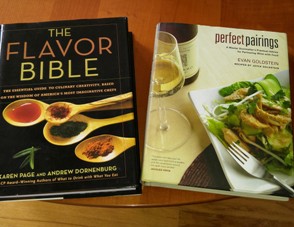
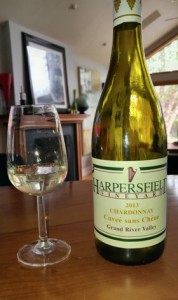
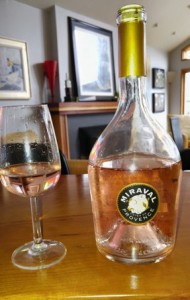
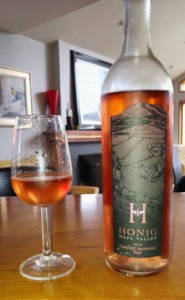
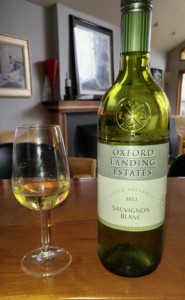
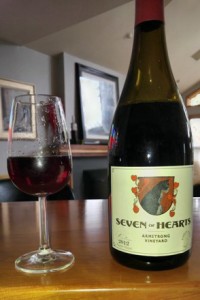
Hi Mark,
Imagine my surprise at seeing the Armstrong Vineyard Pinot mentioned in your blog! Wonderful! I’ve never thought to pair it with bbq, but boy oh boy it is one of my favorite wines that Byron makes. Thank you!